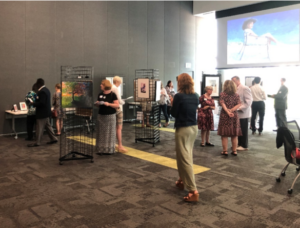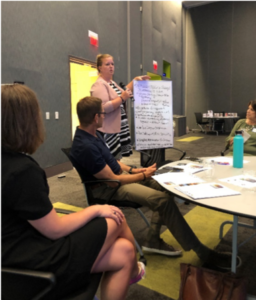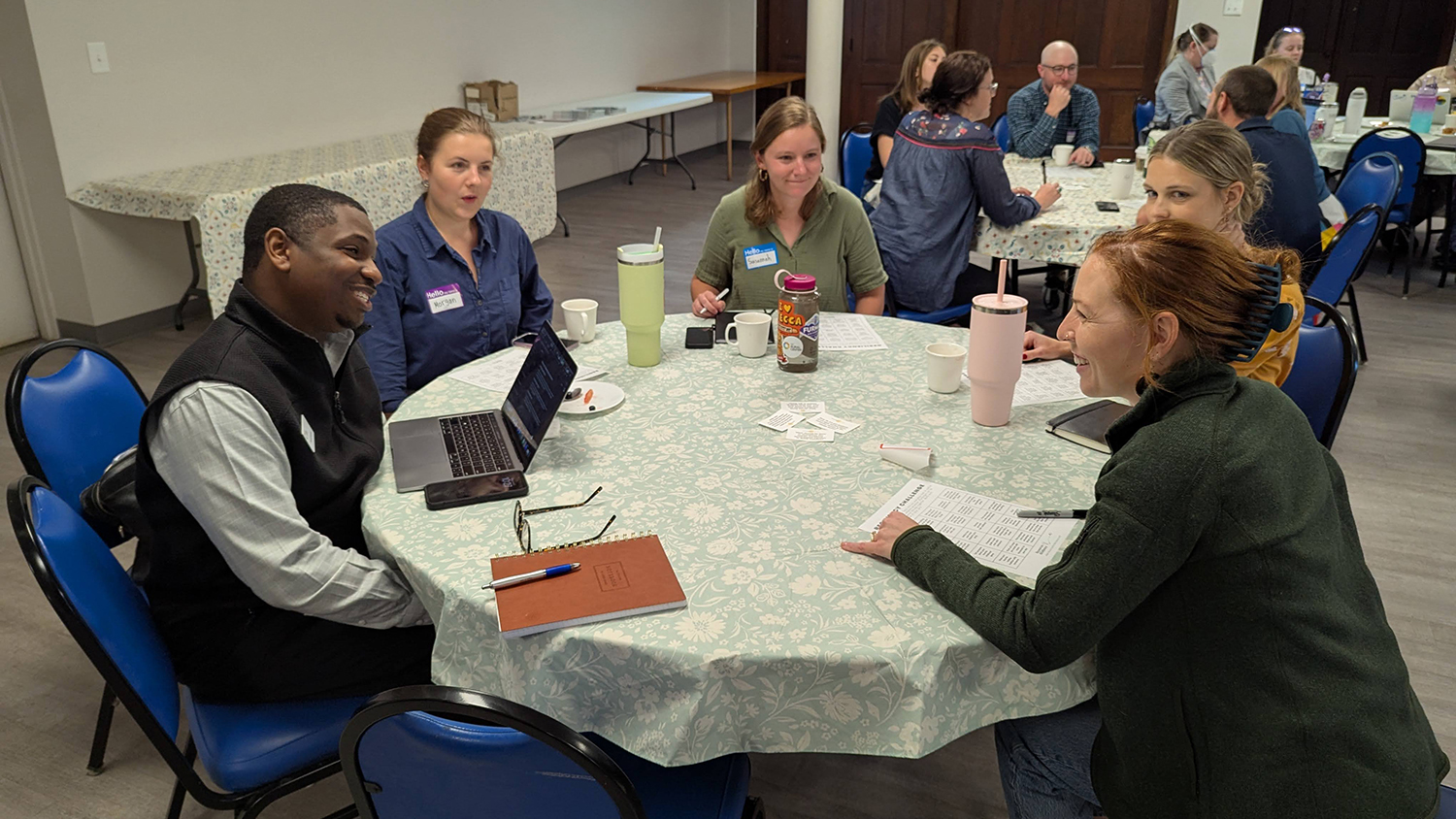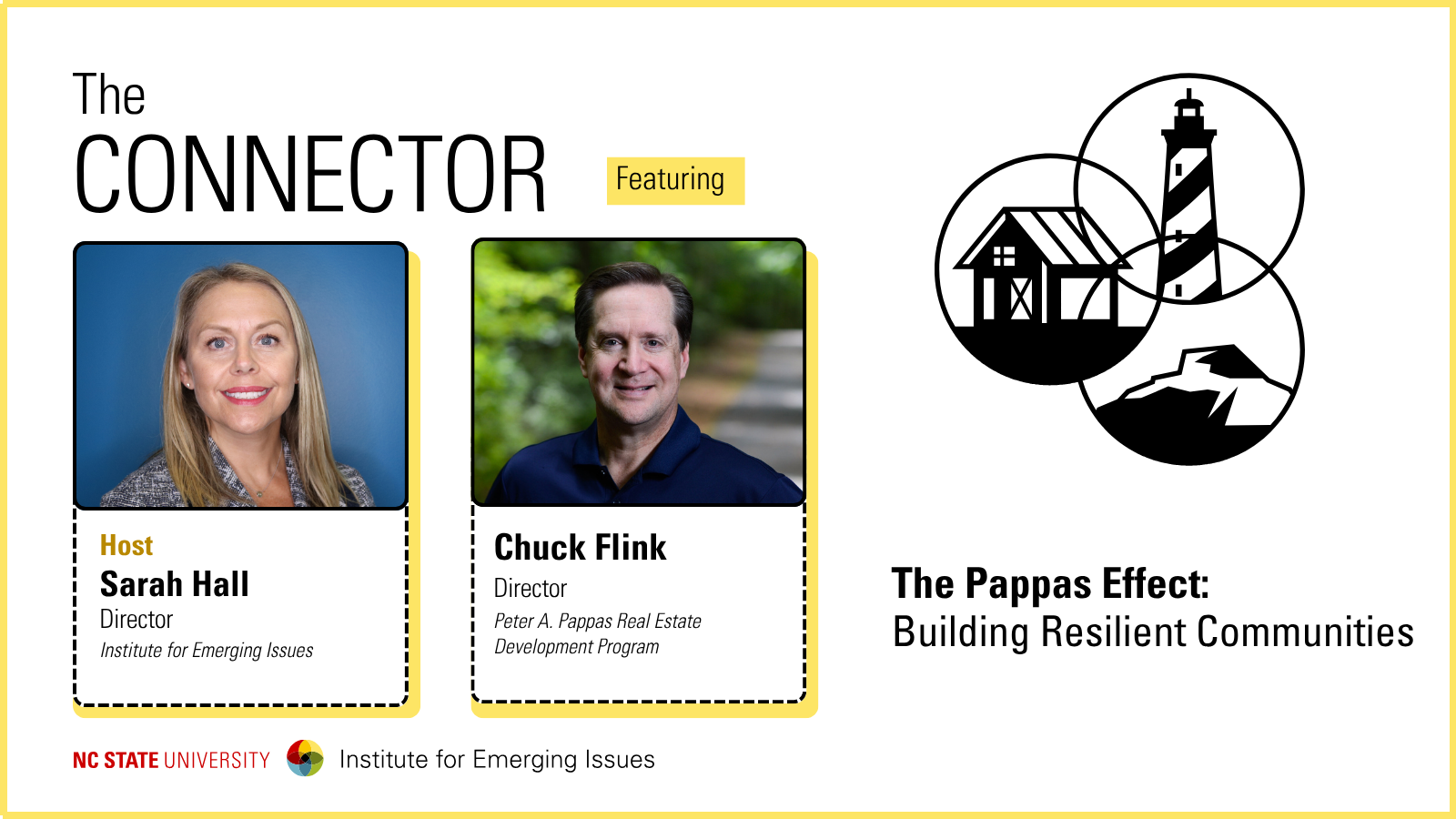Conversations Through Art
A guest post by Charles Adair, Empathy Through Art
What does being dementia capable mean to you?
Where are we right now as a dementia capable community?
“I don’t think we are.”
-Caregiver participant
On Wednesday, July 12, the Institute for Emerging Issues partnered with Empathy Through Art, the Dementia Alliance of North Carolina, and Dementia Capable Cary to host Conversations Through Art. This event, designed by Empathy Through Art, used multimedia works of art as well as recorded musical and spoken word performances to help attendees better understand the challenges that caregivers face when taking care of someone with Alzheimer’s or dementia. Local business leaders were invited to experience the art and then had the opportunity to sit down for small round table discussions with caregivers over a shared meal. Our goal was to help business leaders empathize with people in our community who have dementia and their caregivers to help our local businesses become more dementia friendly. At the end of the evening we asked participants to share their thoughts on how we can best make our community more dementia friendly. This write-up summarizes what was said.


What is the most important priority from tonight’s conversation?
“Awareness” “Empathy” “Inclusivity”
The biggest takeaway from the event was that even though dementia is very prevalent within our communities, most people only have a surface level understanding of the challenges that those with dementia and their caregivers face on a day-to-day basis and how isolating it can be.
Recommendations from the conversations are summarized, categorized, and outlined below:
Awareness, Education, and Empathy
- Teach employees what dementia is and how to recognize it
- Train employees to engage those with dementia and help in an appropriate way
- Add dementia education to current employee training programs
- Use roleplay and shared spaces to help employees get comfortable and create a culture of inclusivity to reduce the stigma of dementia
- Provide resources that help people understand the different types of dementia and how dementia impacts people differently
- Continue to raise public awareness so that it is consistent with dementia’s widespread and growing impact on our communities
Physical Spaces
- Provide family or unisex bathrooms so caregivers can stay with the person they are caring for
- Reduce or highlight steps, curbs, protrusions, and other physical obstacles and barriers
- Provide clear signage. Use pictures and large print on menus, instructions, and other writing
- Design spaces for social interaction, but include places for resting (seating, quiet areas, etc.)
- Keep spaces well lit
- Provide sensory friendly areas, services, and programs
Community
- Create public spaces and community events that are safe, welcoming, and social
- Provide opportunities for community members to interact directly with people with dementia
- Provide transportation options for those who can no longer drive
- Use the Arts to help people understand what people with dementia and their caregivers go through
- Fight isolation by providing communities with resources on dementia and how community members can support each other
- Develop more cross-generational co-housing opportunities
Services and Programs
- Provide programs that help families prepare for caring for someone with dementia (legal, caregiving, etc.)
- Create programs that highlight “living in the moment” and create joy
- Provide places and opportunities for respite that are low cost and accessible
- Offer dementia specific training for healthcare professionals, especially for nursing home and rehab center employees
- Ensure that elderly have access to quality services designed with them in mind (dentist, doctor, hair dresser, restaurants, etc.)
“Something as simple as going to the bathroom can be a huge challenge for someone with dementia and their caregiver.”




- Categories:


